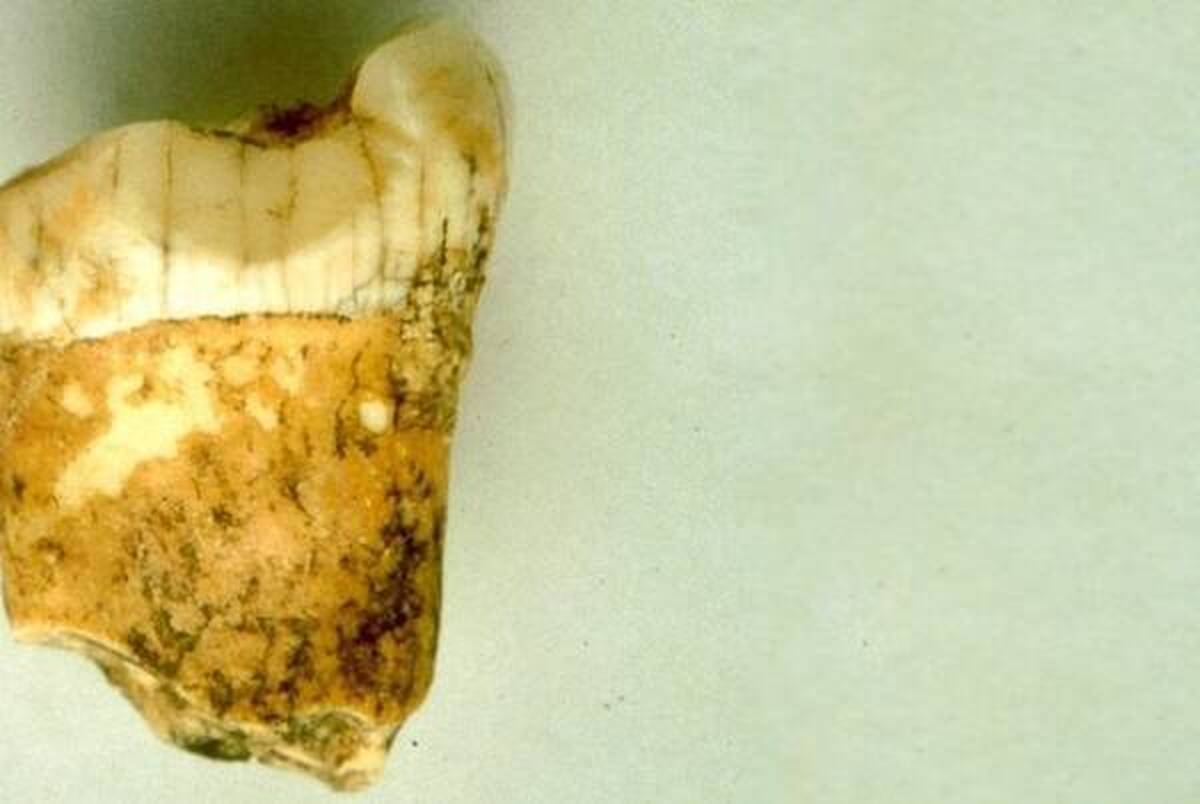Ancient Tooth Finally Reveals Whether Neanderthals Were Carnivores

Despite all we've discovered about our close Neanderthal cousins over the past century, there are still plenty of lingering questions. We know Neanderthals were proficient hunters, for example, but we still aren't sure to what degree they supplemented their diet with plants… if at all, the journal Proceedings of the National Academy of Sciences (PNAS) reported.
Other studies have challenged that conclusion, however, suggesting Neanderthals in other locations ate a significant amount of meat, largely in the form of deer, mammoth, and wooly rhinoceros.
In hopes of adding clarity to the question of Neanderthal carnivory, an international team of researchers used new analytical methods to examine tooth enamel of a Neanderthal from the Middle Paleolithic, whose remains were found at the Gabasa cave site in Spain.
Traditionally, scientists hoping to figure out an extinct animal's position in the food web must extract proteins and analyze nitrogen isotopes from bone collagen – higher ratios of nitrogen-15 compared to nitrogen-14 is indicative of greater amounts of meat consumption.
This technique has limits, though, and may only work on specimens from temperate climates, and even then, work best on specimens that have died within the past 50,000 years. It also could be misleading if the animal itself was fattened on a plant diet that had more nitrogen-15 than expected.
While nitrogen isotope analysis has shed light on some other Neanderthal remains, it wouldn't work on the Gabasa tooth, so researchers instead tested zinc isotope ratios in the enamel.
This method takes advantage of changes in the concentration of zinc in enamel with each step in a food chain, a feature demonstrated in modern remains and a few ancient animal bones. This is the first time zinc has been used to assess the dietary habits of a Neanderthal, however.
Led by Klervia Jaouen from the French National Centre for Scientific Research (CNRS), the researchers conducted the zinc isotope analysis on the Neanderthal molar as well as bones from several contemporary animal species found nearby, including herbivores and carnivores.
Lower proportions of zinc-66 isotopes in an animal's bones tend to correspond with a higher likelihood that animal was a carnivore, the researchers explain.
And based on the low zinc isotope signature found in this Neanderthal molar, Jaouen and her colleagues conclude it probably came from a dedicated meat eater.
Its signature suggests that "of a top-level carnivore," they write, "similar to that observed for nitrogen isotopes for other sites with Neandertal occupation." Of all animal groups studied at Gabasa, they add, the Neanderthal "easily exhibits the lowest" zinc isotope ratio.
While this Neanderthal may have been an apex predator in Paleolithic Iberia, there is some evidence to suggest dietary differences compared with other carnivores.
Many contemporary carnivores in this region likely consumed the bones and blood of their prey, which could have raised their zinc isotope signature, the researchers note.
Because this Neanderthal has such a low zinc isotope signature, Jaouen and her colleagues suspect the individual ate a lot of animal meat, but not the blood or bones (possibly aside from bone marrow).
Other chemical evidence suggests this Neanderthal was weaned before two-and-a-half years of age, the researchers add, and likely died in the same area where they were born.
While these findings support existing evidence of Neanderthals' carnivorous tendencies, more research is still needed to help us understand the full range of Neanderthal diets.
Just as they likely preyed on different animals in different places based on local availability, it remains plausible that some Neanderthal populations may have supplemented their diets with plants and fungi more than others.
This type of zinc isotope analysis makes it easier to identify animals as carnivores or omnivores, the researchers say, and it could soon help resolve that question for Neanderthals more broadly.
Jaouen and her colleagues hope to perform similar analyses on other Neanderthals from other sites, they note, including the fossil-rich Payre site in France's Rhone Valley.
4155/v





















